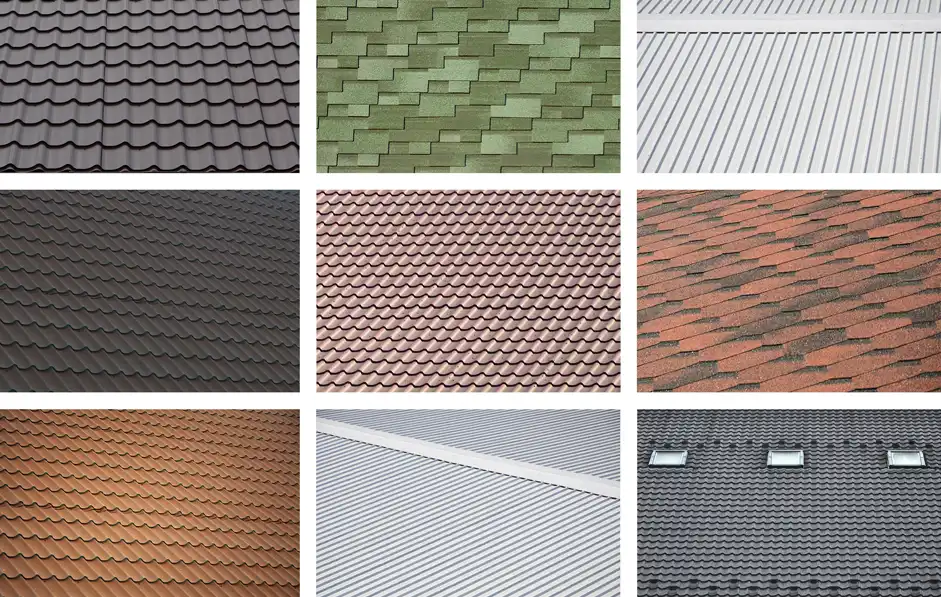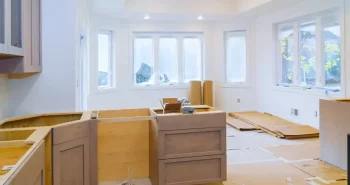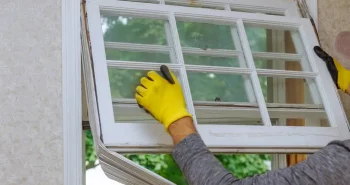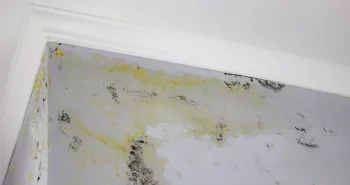Roofing types vary in durability, cost, and appearance. Choosing the right roofing system depends on your budget, climate, and design preferences. Some materials last longer and require less maintenance, while others provide better insulation or withstand harsh weather conditions like snow and heavy rain. The right roof not only protects your house but also affects energy efficiency and resale value. With so many options available, it’s important to understand the pros and cons of each. To help you make an informed decision, here are 11 types of roofing to consider.
1. Asphalt Shingles: A Popular and Affordable Roofing Choice
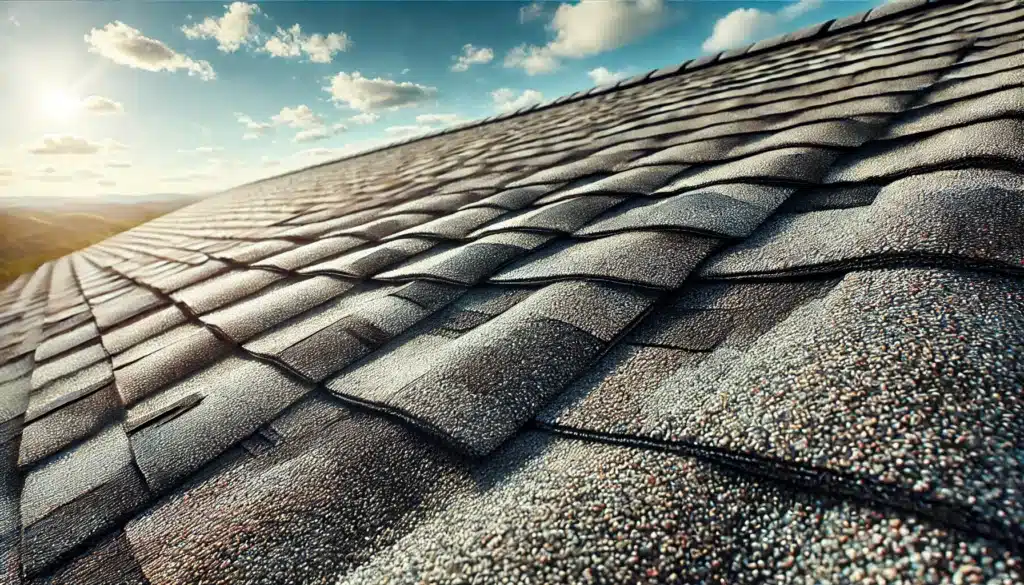
Asphalt shingles are the most common roofing material for residential homes due to their affordability, versatility, and ease of installation. An asphalt roof performs well in various climates and provide reliable protection against wind, rain, and moderate weather conditions. With a wide range of styles and colors, asphalt shingles make it easy to match your home’s existing look or give it a fresh, updated appearance.
While traditional asphalt shingles are budget-friendly, they have a shorter lifespan compared to more durable materials, typically lasting around 20 to 25 years. They are also more prone to wear and tear from extreme temperature changes, which can cause cracking, curling, or shingle loss over time. Regular maintenance and timely repairs can help extend their longevity, but homeowners in areas with severe weather may need a roof replacement sooner than expected. Despite these drawbacks, asphalt shingles remain a practical and cost-effective choice for many homeowners looking for an attractive and functional roofing system.
2. Metal Roofing: A Durable and Long-Lasting Option
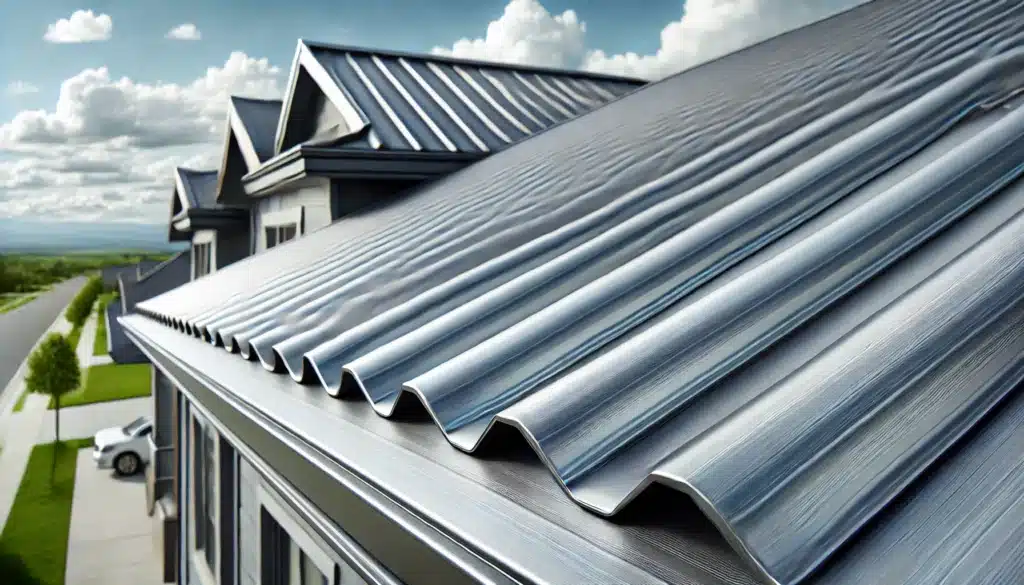
Metal roofing is becoming more popular for residential homes. Although it sounds industrial, metal roofing can be constructed to look like tile, shake, and even slate roofing. When properly installed, metal roofing can last up to 60 years. The overall durability is matched with strong energy efficiency and fire resistance, which can benefit homes in at-risk areas. All-in-all, there are both pros and cons of metal roofing.
Although the initial cost of metal roofing is higher than other materials, its long-term benefits often outweigh the expense. It requires minimal maintenance, resists fire, mold, and pests, and can last decades without rotting or cracking.
However, metal roofs can be prone to dents from hail and may be noisier during storms. Adding insulation can help reduce sound but may increase installation costs. Despite these drawbacks, metal roofing remains a durable, energy-efficient option that can boost a home’s resale value and lower energy costs.
3. Clay Tiles: Durable and Energy-Efficient Roofing for Hot Climates
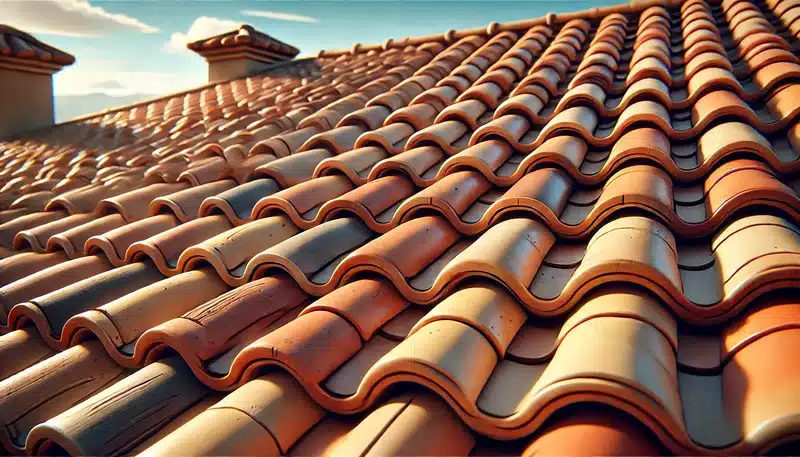
Clay tiles are a popular roofing choice in hot, dry climates, especially in the Southwest. Their distinctive reddish-brown hues add character to homes while also reflecting heat, improving energy efficiency, and keeping interiors cooler. These tiles are fire-resistant and require minimal maintenance, making them a long-lasting option for homeowners seeking durability and style.
However, clay tiles are heavy, and some homes may require additional structural support before installation. They are also fragile under direct pressure, so walking on them can lead to cracks or breakage. Despite these considerations, once properly installed, clay tiles offer excellent resistance to strong winds, heavy rain, and even earthquakes, providing reliable protection for decades.
4. Concrete Tiles: A Strong and Cost-Effective Roofing Solution
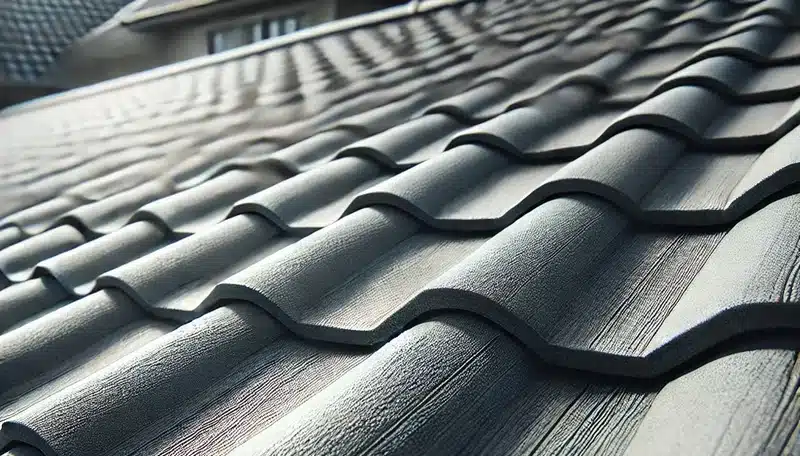
It may surprise you, but a concrete tile roof is another strong and long-lasting option for homeowners. It shares many structural similarities with clay tiles but offers greater versatility in appearance. The sand mix used to create each tile can be adjusted to achieve specific colors, allowing for more customization to match different architectural styles.
The installation process and benefits of a concrete tile roof are similar to those of clay tiles, including durability, fire resistance, and energy efficiency. However, concrete tiles come at a significantly lower cost, making them a more budget-friendly alternative. While they are lighter than clay, they still require a reinforced roof structure to ensure safety and longevity. To ensure it meets your home’s needs, consider key factors outlined in our guide on how to choose the best roof for your home.
5. Wood Shingles and Shakes: Natural Beauty with Lasting Appeal
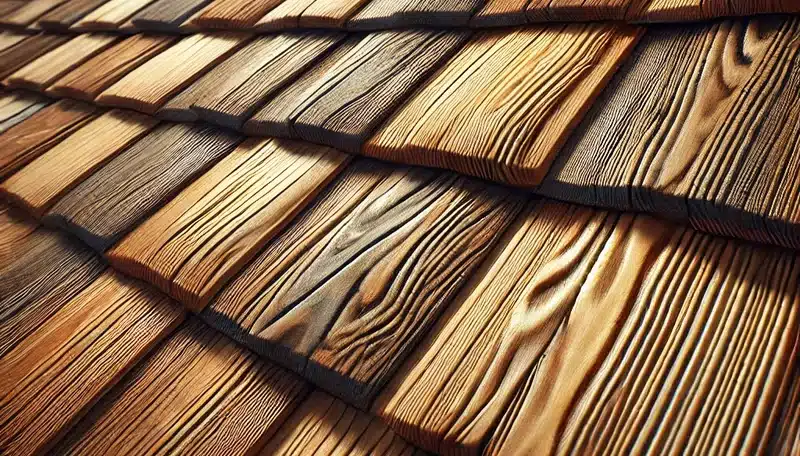
A natural roof made from wood shingles or wood shakes offers a timeless, rustic look that enhances various architectural styles. When left unstained, wood shingles start as a light brown color and gradually develop a silver-gray patina over time. A well-maintained wood roof can last up to 50 years, making it a long-lasting option for homeowners who prioritize aesthetics and sustainability. However, climate plays a major role in its longevity. In dry regions, a wood roof requires regular fire-resistant treatments to reduce the risk of ignition. In wet climates, excess moisture can lead to rotting or water damage, shortening its lifespan. Despite the need for more maintenance, wood shakes and shingles are an environmentally friendly choice, as they are fully biodegradable and sourced from renewable materials.
6. Slate Shingles: Premium Roofing for Timeless Durability
Slate shingles are one of the most upscale roofing options, offering both longevity and elegance. A natural slate roof can cost up to seven times more than traditional asphalt, but with proper installation, it can last over 100 years. Its smooth, stone-like appearance gives homes a sophisticated look while also providing excellent fire resistance and superior durability.
However, natural slate is a heavy material, requiring a structurally reinforced roof to support its weight. For homeowners looking for a more lightweight and budget-friendly alternative, synthetic slate offers a similar aesthetic with easier installation and reduced structural demands. Whether choosing natural slate or synthetic slate, this roofing option provides lasting beauty and strong protection for your home.
7. Rubber Slate Roofing: A Lightweight and Durable Alternative
Alternatively, you could opt for rubber slate roofing, which is often made from EPDM (ethylene propylene diene monomer). This type of roofing material is fairly easy to install and requires very little maintenance, but the aesthetics might not be up to the standards of traditional materials. However, rubber slate is a great choice if you have a flat or low-slope roof.
8. Solar Tiles: Innovative Roofing for Energy Efficiency
Solar panels are another great option for roofing, especially if you live in a sunny environment. They allow you to blend energy efficiency with high-performing functionality in order to generate renewable energy. This, in turn, can result in long-term cost savings on energy bills and a drastic increase in overall property value. However, it’s important that you find someone who understands how to properly install solar panels, as a poor installation job can lead to extremely costly repairs down the line. Solar tiles also come with a higher initial installation cost but may be worth it, depending on your location.
9. Green Roofing: Eco-Friendly and Energy-Efficient Protection
Green roofing is becoming an increasingly popular trend across the country. A green roof features a layer of vegetation, such as grasses or wildflowers, installed on the surface. Beyond its unique aesthetic, this type of roofing supports pollinators, improves air quality, and provides several natural benefits to your home.
One of the biggest advantages of a green roof is its excellent insulation, which helps regulate indoor temperatures and reduce energy costs. It also minimizes urban heat buildup and contributes to overall environmental sustainability. However, installation can be complex, requiring waterproofing, proper drainage, and structural reinforcements to handle the added weight of soil and plants. Maintenance is another key factor, as regular gardening and landscaping are needed to prevent overgrowth and keep the vegetation healthy.
10. Synthetic Roofing Materials: Durable and Versatile Alternatives
Synthetic roofing materials mimic the look of traditional materials like natural wood or slate while offering enhanced durability. They include things such as composite shingles or faux slate, which mimic the look of natural materials. Several types of synthetic roofing materials offer extremely high durability while keeping overall costs low. Plus, the materials are lightweight, making installation easier and maintenance stress-free. Lifespan can vary depending on the type of material you choose and the installation process, so it’s important to understand your options before making a decision. Unfortunately, synthetic roofing isn’t as environmentally friendly as other options.
11. Built-Up Roofing (BUR) or Membrane Roofing
Built-up roofing (BUR) and membrane roofing are common options for flat roofs. Built-up roofing is constructed of asphalt, tar, adhesive, and sometimes even felt or fiberglass. The various layers are stacked on top of one another and sealed with an aggregate to create a durable, weather-resistant surface. The installation can be a little tough and BUR shouldn’t be used on sloped roofs, but they are a great option for industrial buildings or modern, flat-roofed residential homes.
Membrane roofing is made from single-ply roofing membranes like EPDM (ethylene propylene diene monomer), TPO (thermoplastic olefin), and PVC (polyvinyl chloride). They’re lightweight, work well with flat roofs, and carry the same advantages and disadvantages as BUR.
Final Thoughts on Choosing the Right Roofing Type
Choosing the right roofing type depends on your budget, climate, maintenance preferences, and construction requirements. Each material offers unique benefits, from affordability and durability to energy efficiency and aesthetics. Asphalt shingles remain a popular choice for their cost-effectiveness, while metal, slate, and tile roofs provide long-lasting protection. For eco-friendly options, solar and green roofs can help reduce energy costs. With various roof styles available, it’s important to consider factors like lifespan, structural needs, and weather resistance. Consulting a professional roofing company can help ensure proper installation and long-term performance.
The Importance of Finding a Good Roofing Contractor
Selecting the right roofing material is only half the battle; finding a skilled and reputable roofing contractor is equally important. The right contractors will help ensure you avoid bad roofing jobs and are left with a beautiful roofing installation that lasts for years. They understand how to properly install the roofing material to maximize its lifespan and performance without charging you for unnecessary costs. Before getting started, always talk to a roofing contractor for an estimate and weigh your options. Look for contractors with a proven track record, proper licensing and insurance, and positive customer reviews. Request multiple quotes, compare warranties, and don’t hesitate to ask questions about the installation process.
When you’re ready to get started on your new roof selection and installation, contact First Star Exteriors. With offices in North West Arkansas and Conway, we believe there’s a perfect balance between hands-on, personable treatment, quality of work, and speed of delivery. The contractors at First Star Exteriors always take the time to understand your needs and communicate effectively from the first quote to the last nail placed. To learn more about our roofing options or to get a quote from us today within 48 hours, contact us at (479) 267-4800 or fill out our contact form here.

